William D. Harper, Jr, MS, DC: anything can cause anything
- PMID: 18327301
- PMCID: PMC2258241
William D. Harper, Jr, MS, DC: anything can cause anything
Abstract
Trained as an engineer and a chiropractor, William D. Harper, Jr. made his career in the healing arts as instructor, writer and president of the Texas Chiropractic College (TCC). A native of Texas who grew up in various locales in the Lone Star State, in Mexico and in the Boston area, he took his bachelor's and master's degree in engineering in 1933 and 1934 from the Massachusetts Institute of Technology, and his chiropractic degree at TCC in 1942. Dissatisfied with the "foot-on-the-hose" concept of subluxation syndrome (D.D. Palmer's second theory), Dr. Harper studied and wrote about aberrant neural irritation as an alternative explanation for disease and for the broad clinical value he perceived in the chiropractic art. In this he paralleled much of D.D. Palmer's third theory of chiropractic. His often reprinted textbook, Anything Can Cause Anything, brought together much of what he had lectured and written about in numerous published articles. He was well prepared for the defense of chiropractic that he offered in 1965 in the trial of the England case in federal district court in Louisiana. The case was lost when the court ruled that the legislature rather than the judiciary should decide whether to permit chiropractors to practice, but Harper's performance was considered excellent. He went on to guide the TCC as president from 1965 through 1976, its first 11 years after relocating from San Antonio to Pasadena, Texas. Harper built the school - its faculty, staff and facilities - from very meager beginnings to a small but financially viable institution when he departed. Along the way he found fault with both chiropractic political camps that vied for federal recognition as the accrediting agency for chiropractic colleges in the United States. Dr. Bill Harper was a maverick determined to do things his way, and in many respects he was successful. He left a mark on the profession that merits critical analysis.
Ingénieur et chiropraticien de formation, William D. Harper Jr. a fait sa carrière dans le domaine de la guérison en qualité d’instructeur, d’auteur et de président du Texas Chiropractic College (TCC). Originaire du Texas, il a grandi dans des diverses villes du Texas, du Mexique et de l’agglomération de Boston. Il a obtenu son baccalauréat et sa maîtrise en génie en 1933 et 1934 de Massachusetts Institute of Technology et, en 1942, a obtenu son diplôme de chiropraticien du TCC. Peu satisfait du concept « foot on the hose » (« pied sur le boyau ») du syndrome de subluxation (la deuxième théorie de D. D.Palmer), le Dr Harper a étudié et écrit sur le sujet de l’irritation neurale aberrante comme une explication de rechange pour les maladies et pour la valeur clinique plus vaste qu’il a vu dans l’art chiropratique. En ce sens, il a suivi une trajectoire semblable à celle de la troisième théorie de D.D.Palmer. Son ouvrage « Anything Can Cause Anything » (« Tout pourrait causer tout »), qui a eu plusieurs réimpressions, a regroupé la plupart de ses cours et de ses articles publiés. Il était bien préparé pour la défense de la chiropratique qu’il a présentée en 1965 dans « le procès England » au tribunal du district fédéral en Louisiane. Il n’a pas eu gain de cause parce que le tribunal a statué qu’il en revenait à la législature plutôt qu’à la magistrature de trancher sur le sujet de l’autorisation aux chiropraticiens d’exercer leur profession. La prestation du Dr Harper devant le tribunal a été considérée excellente. Il a ensuite dirigé le TCC en tant que président du 1965 au 1976 – les premières 11 ans de l’institution après sa relocalisation de San Antonio à Pasadena, Texas. On a attribué au Dr Harper la construction de l’école – sa faculté, son personnel et ses installations. Avant de partir, le Dr Harper a veillé à ce que cette école, qui a connu des débuts modestes, devienne une institution qui, malgré sa petite taille, était financièrement rentable. Il a également critiqué les deux camps politiques de la chiropratique qui rivalisaient pour obtenir la reconnaissance fédérale pour devenir l’organisme d’accréditation pour les institutions d’études chiropratiques aux États-Unis. Le Dr Bill Harper était un non conformiste, déterminé de poursuivre à sa façon, une philosophie dont il a réussi sous plusieurs aspects. Il a profondément marqué la profession qui mérite de l’analyse critique.
Keywords: Harper; Texas Chiropractic College; chiropractor.
Figures


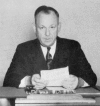







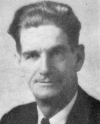
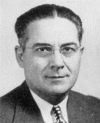


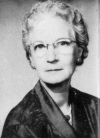















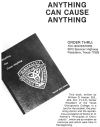






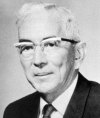

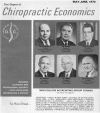

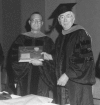

References
-
- Harper WD. Autobiographical sketch, unpublished, 1982. from the archives of the National University of Health Sciences; Lombard, Illinois:
-
- Dzaman F, Scheiner S, Schwartz L, editors. Who’s who in chiropractic. 2. Littleton CO: Who’s Who in Chiropractic International Publishing Co.; 1980. p. 114.
-
- Keating JC, Davison RD. That “Down in Dixie” school: Texas Chiropractic College between the wars. Chiropractic History. 1997 Jun;17(1):17–35.
-
- Rehm WS. Who was who in chiropractic: a necrology. In: Fern Dzaman, Sidney Scheiner, Larry Schwartz., editors. Who’s who in chiropractic. 2. Littleton CO: Who’s Who in Chiropractic International Publishing Co.; 1980.
-
-
Hender HC, registrar of the Palmer School of Chiropractic. Letter to whom it may concern, 23 September 1943 (Special Collections, Texas Chiropractic College Library).
-
LinkOut - more resources
Full Text Sources
